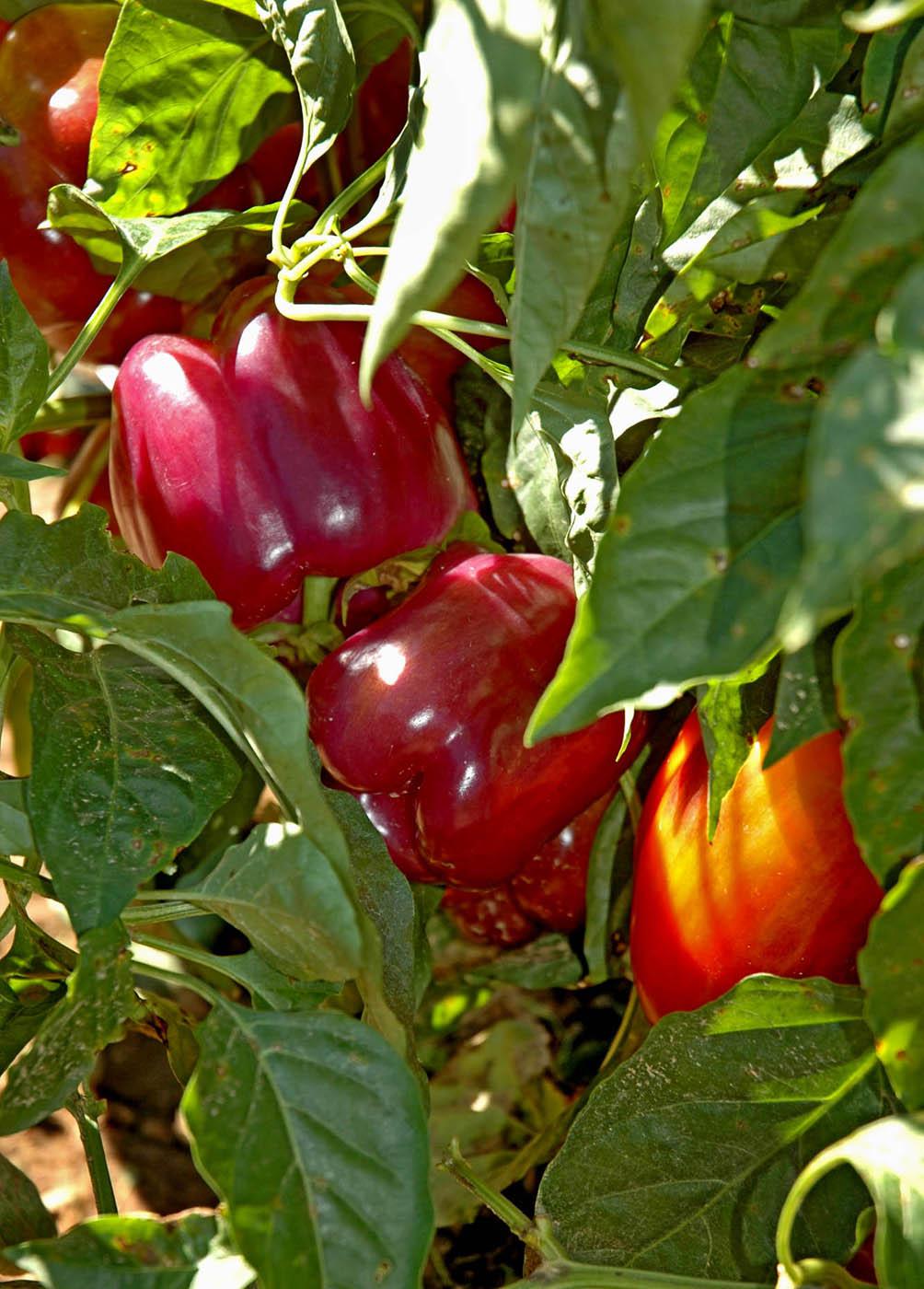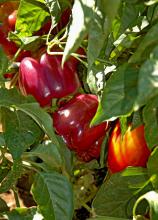Information Possibly Outdated
The information presented on this page was originally released on February 1, 2007. It may not be outdated, but please search our site for more current information. If you plan to quote or reference this information in a publication, please check with the Extension specialist or author before proceeding.
Tequila sweet bell pepper captures Medallion award
By Norman Winter
MSU Horticulturist
Central Mississippi Research & Extension Center
Winter's coldest days drive most of us deep into the cushions of our easy chairs, and gardening is largely in the form of dreams about spring and summer plantings.
Permit me to do a little armchair quarterbacking by encouraging gardeners to consider growing an incredible sweet bell pepper called Tequila. The Mississippi Plant Selections Committee recently introduced it as a 2007 Mississippi Medallion award winner.
Tequila is certainly not a typical bell pepper. I would say it's a purple pepper, but that would not be accurate because in Mississippi State University trials, it shows off a carnival of colors and can be harvested at any stage.
The peppers start off green, but as they reach a size a little larger than a golf ball, the color starts to change to yellow and orange, then deep-dark purple. Leave it there a little longer, and you'll have a tasty, sweet red pepper.
It stands to reason that as the plant grows, you have peppers at various stages of maturity and a kaleidoscope of ever-changing colors. If that weren't enough, consider also that Tequila really loads up for a bountiful harvest over a long period of time.
Select healthy plants that are green with strong foliage. Yellowed leaves, spindly stems or sparse foliage indicate the plant is not thriving and probably will not perform well in your garden. Choose a site in full sun with beds that are fertile and well drained.
Plan on spacing plants about 18 to 24 inches apart. Tequila peppers work well as part of an edible landscape or in garden rows spaced about 36 inches apart. This allows for good air circulation and permits easy cultivation.
Dig planting holes in the garden soil before removing plants from the containers. While you may plant a tomato deeper than it grew in the container, you must plant the pepper at the same depth it is presently growing.
Feed Tequila peppers with a complete garden fertilizer, preferably one that is higher in phosphorous, such as a 10-20-10. Apply 2 tablespoons per plant on three- to four-week intervals. Use a dilute, water-soluble fertilizer every other week if preferred or if growing in a container.
Tequila sweet bell pepper offers another strong attribute. It is environmentally friendly in that it is resistant to tobacco mosaic virus.
Maturity is about 72 days after transplanting. Harvest the peppers at any stage to add a colorful zest to salads. With so many colors on one plant, you can pick the perfect pepper to complement the dish being prepared in the kitchen.
Bill Evans, research horticulturist at MSU's Truck Crops Experiment Station, said the Mississippi Medallion list now offers a three-pack of winners for the garden and kitchen. They are the Mini Charm grape tomato and Purple Ruffles basil, which were 2004 winners, and now the Tequila bell pepper.
Make sure your garden center has them in time for planting in April.
Tequila bell pepper represents the 42nd winner in the Mississippi Medallion award program that began in 1996. The Mississippi Nursery and Landscape Association, MSU Extension Service, Mississippi Agricultural and Forestry Experiment Station and the Mississippi Plant Selections Committee sponsor the program.



